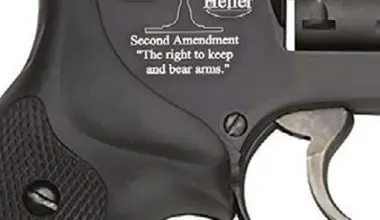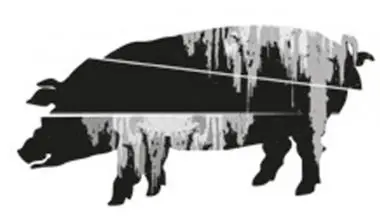HE opened fire on the unarmed and helpless patrons. Twelve people died and 58 were injured, the highest casualty rate in any American mass shooting.
Less than three weeks later, a racist malcontent entered a Sikh temple in Wisconsin. He shot several people, including a responding police officer and the temple’s leader, with a handgun. Seven, including the gunman, were killed. That kicked off a long, hot summer of shootings that drew national press coverage.
From a gun hater’s perspective, it was a beautiful thing. They love humanity; just ask them and they’ll tell you how much better off the rest of us humans would be if we did what they want. But then, they also love that cliché about never letting a good crisis go to waste. And from their point of view, several terrible shootings in a row were about as good as it gets. Aha! A new chance to attack guns.
Trial balloons went up all over the place. What would be the demon du jour? “Assault weapons”? “High-capacity clips”? Armor-piercing bullets? Naw, they’ve all been done. People aren’t buying the standard talking points anymore. There had to be something new—or at least old enough that the short-memoried public would think it was new.
Ah! How about “public health”? There’s no question that lunatic in Aurora and that creep in Wisconsin threatened the living daylights out of the health of a bunch of moviegoers and worshippers. So how about presenting “gun violence” as a problem in epidemiology? It sounds so deliciously deadly: an epidemic of violence, a contagion of gun ownership.
It’s been tried, sure. Back in the 1980s, the Centers for Disease Control and Prevention (CDC) supposedly applied the tools of epidemiology to studies of gun crimes and suicides and discovered (you’ll be shocked, I’m sure) that the problem with “gun violence” is all those guns. By the early 1990s, the American Medical Association and the New England Journal of Medicine had published one-sided studies purporting to prove, among other things, that the easy availability of guns and the irresponsible failure of people to disassemble their guns and lock up the pieces were major factors in the “epidemic.”
In 1996, Congressman Jay Dickey publicly chastised the Director of the CDC’s National Center for Injury Prevention and Control (NCIPC) for treating guns as a public health menace, suggesting that the director was “working toward changing society’s attitudes so that it becomes socially unacceptable to own handguns.”
What? You don’t think an agency responsible for saving us from actual diseases would spend its time on antigun social engi neering? Well, they did it anyway.
Back then, the CDC and its offshoot NCIPC publicly denied there was any political agenda going on at all, let alone one to ban guns. Separately, their honchos were a little more honest. In 1994, NCIPC’s Mark Rosenberg told The Washington Post, “We need to revolutionize the way we look at guns, like what we did with cigarettes. Now it is dirty, deadly, and banned.”
This approach to gun control as a public health issue didn’t catch on then—gun owners were on the alert and fighting back after several huge legislative blows. We were in no mood to play nice with the control crowd. On the other hand, the “guns as disease” theme never really went away, either.
As recently as 2009, the CDC published a pamphlet titled “The History of Violence as a Public Health Issue.” It included such chilling bits of praise for itself as “Overall, [the CDC] helped demonstrate that significant reductions in aggressive and violent behavior were possible with applied, skillbased violence-prevention programs that address social, emotional, and behavioral competencies, as well as family environments.”
In other words, before “aggressive and violent behavior” can be eradicated in the American public, public health officials need input into pretty much everything we do.
With the rash of summer shootings, the meme has been revived and dusted off. Within weeks of the Aurora tragedy, that reliable mouthpiece, USA Today, ran a story with lots of disjointed quotes from “public health experts,” claiming to prove that “gun violence” is a “social disease” that can be treated like any other contagious ailment—by giving lots of intrusive power to those who know so much about what’s good for us.
“We have a public health issue to discuss,” one “expert” is quoted as saying. “Do we wait for the next outbreak or is there something we can do to prevent it?” Outbreak. Yeah, now there’s another nice disease term for you. These people just love doing that.
“It isn’t enough now to tackle gun violence by focusing solely on the people doing the shooting,” says Dr. Garen Wintemute, who directs the Violence Prevention Research Program at the University of California.
Of course not. The problem with “gun violence,” you see, isn’t the crazy or evil people who commit mass shootings. No, the problem is that they can get guns. And why can they get guns? Because you and I, dear reader, have misguidedly prevented our beloved wouldbe protectors from helping us by making guns “dirty, deadly, and banned.”
We just don’t know what’s good for us.
Quoting that USA Today article: “Gun ownership—a precursor to gun violence—can spread ‘much like an infectious disease circulates,’ said Daniel Webster, a health policy expert and co-director of the Johns Hopkins Center for Gun Policy and Research in Baltimore. ‘There’s sort of a contagion phenomenon’ after a shooting, where people feel they need to have a gun for protection or retaliation, he said.”
You buy a gun after a well-publicized crime because you’re sick? Because you’ve caught a deadly bug? Tell that to the members of that Wisconsin Sikh temple—who, according to a report on the website LewRockwell.com, sought out and started expert firearms training days after their fellow congregants were murdered. (Sikh men already carry a ceremonial sword or dagger whose name, kirpan, translates to: “the dignity and honor of compassion, kindness and mercy.” Their religion requires them to carry a kirpan at all times for the protection of themselves and others; alas, a knife is no match for a firearm.)
Diseased behavior? Heck no. It’s just common sense and personal responsibility to take a highly publicized tragedy as a wake-up call. Owning a gun and knowing how to use it responsibly are just pulling your big-boy pants up. How insulting to call such an exercise in grown-up thinking a “contagion phenomenon.” Do these quotable docs really think we’re all as sick or angry as that pair of murderers?
And how do you like “gun ownership— a precursor to gun violence”? Yeah, buy a gun and automatically off you go to murder, rape, pillage, and murder some more.
That same article insinuatingly informs us that, “One recent study found firearm owners were more likely than those with no firearms at home to binge drink or to drink and drive, and other research has tied alcohol and gun violence. That suggests that people with driving under the influence convictions should be barred from buying a gun.” Remember that the next time a “public health expert” assures you there are no political agendas going on here. They’re all just disinterested professionals doing scientific studies, and let the chips fall where they may. Uh huh.
You may of course believe as much of that as you like, but we suggest “none.”
We can hope that this new bunch of noise will go away on its own and that these highly placed docs and “public health officials” won’t be sneakily working on their agenda as you read this. Certainly the facts are not on their side.
Even the USA Today writer was forced to note in passing that mass shootings aren’t on the rise, while at the same time spouting lots of rhetoric to the contrary.
Anti-gun advocacy groups have been out in the cold for the past several years, ever since politicians were forced by voters to conclude that, right now at least, gun control is not what you’d call a winning issue. But complacency is not a good strategy.
The organizations producing this bogus “research” and issuing these proclamations are federally funded. The CDC, NCIPC, UC’s Violence Prevention Research Program, the Injury Research Center of the Medical College of Wisconsin, and who knows how many other “non-partisan” groups, are paid for by the federal government. They—and it—have a strong anti-gun agenda. Just because politicians aren’t actively attacking your gun rights this very minute doesn’t mean they’ve conceded that you actually possess those rights. It only means that—for the moment—they understand that gun bans are dangerous to their careers.
We need to stay vigilant and maintain an uncompromising attitude. Nationwide, gun ownership is up and violent crime is down. If that’s a public health epidemic, I’ll take it.
Even if crime were up (as it undoubtedly will be someday), it wouldn’t matter. The framers of the U.S. Constitution never heard of the Centers for Disease Control and would have been appalled at its existence. When they wrote “[T]he right of the People to keep and bear arms … shall not be infringed,” the sentence didn’t include the words “unless some government-paid medical shills say it should be.”
These particular government-paid shills can publish all the pseudo-epidemiological studies they want, and make all the “public health” recommendations they can spew forth. We can’t stop them. But no matter how they justify their diaper-pissing fear of gun owners, the only answer to their puling little wishes to make guns go away is “No.” Not only no, but hell no.
Enough of these people. We don’t remember hiring any of them. Do you?



